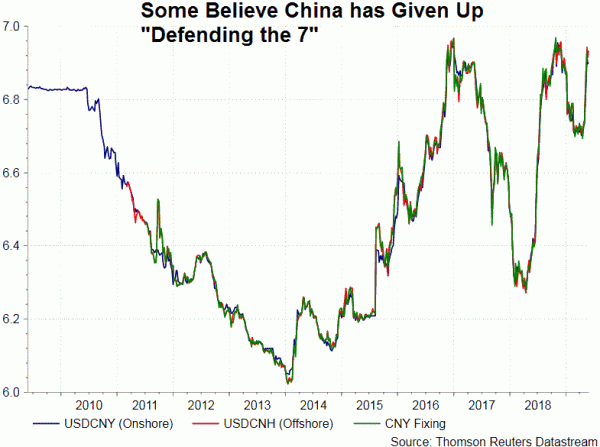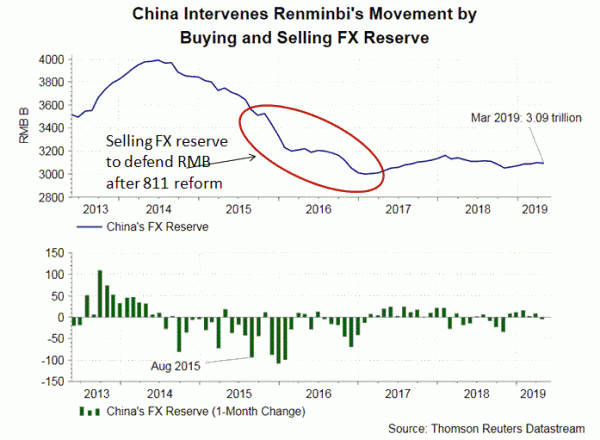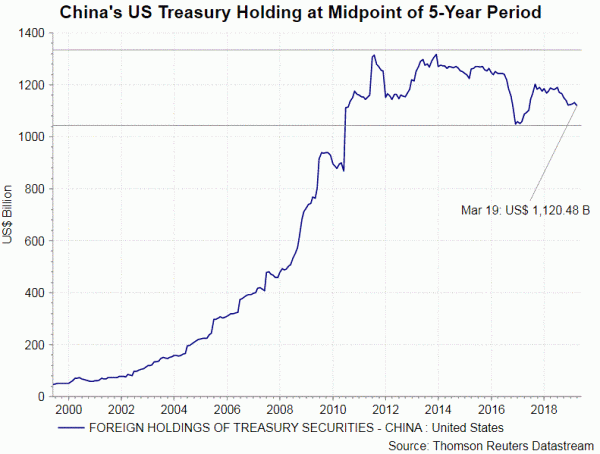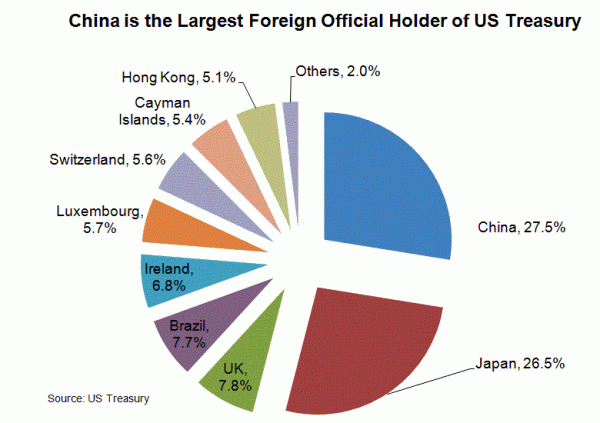China’s White Paper, entitled “China’s Position on the China-U.S. Economic and Trade Consultations” on recent escalations of trade war has weighed on the fragile market. While the majority of market participants judges that China has opted for a hardliner approach, interpretations of the outcomes are diverse. While some judge that the deadlock would be dragged longer, others believe that this would force the US return to the negotiation table. Meanwhile, the market again discusses the potential weapons China could adopt to retaliate. Besides retaliatory tariff, many believe that sharp depreciation of renminbi and reduction of holdings of US Treasury bonds are China’s “nuclear options” in the trade war. In our opinion, these moves would be self-defeating for China, if not internecine, hurting both countries.
As mentioned in the previous report, we mentioned that depreciation of renminbi is a dilemma for the Chinese government. While a weaker renminbi might help exports and retaliate to US demand for a stronger renminbi, excessive depreciation would trigger capital outflow and instability in China’s domestic financial markets. USDCNY rallied after Donald Trump’s tariff announcement on May 10, before stabilizing. The pair has continued hovering below 7 since then. There have been rumors that “defending the 7” is no longer a core mission in the authority, amidst the escalations of trade war. Yet, even a breach of 7 would not change China’s strategy to maintain stable renminbi valuation.
FX Reserve as a Tool to Maintain Renminbi Stability
Intervention of the FX reserve is a key strategy that the government uses to maintain a stable currency. Back in 2015, the disastrous reform on renminbi valuation had triggered massive amounts of capital flowing out of China. Originally, renminbi’s daily fixing was determined by asking market makers for price quotations before the market opens. Under the new arrangement in August 11m 2015, it was determined by three factors, namely, closing rate of the previous day, the demand and supply of the FX market, and the exchange rate of the world’s major currencies. While it appears that more “market-determined” ingredient has been added, the government also announced an one-off devaluation of its currency by -2%. It is this move that had shocked the market, drive global capital away and causing a sharp selloff in renminbi. PBOC had to aggressively sell its FX asset in order to stabilize the market. China’s FX reserve contracted an aggregate of -US$830B in 2015 and 2016. During the period, renminbi depreciated -12% against US dollar. The selling process had not finished until FX reserve fell below US$ 3 trillion in January 2017.
Dumping US Treasury Not Much a Threat
China is the largest foreign holder of US Treasury (including bills, notes and bonds). As of March 2019, the country holds US$1.12 trillion, or 28% to total foreign holdings. However, the size is less than 1% of US$14 trillion US Treasury market. About 70% of the market is held by domestic financial institutions. For instance, the Federal Reserve alone holds over US$ 2 trillion of the share. Considering the small size of Chinese holdings in the huge and deep US Treasury market, the Chinese authority realizes that this move is not effective. Despite monthly fluctuations, China’s holding has been stable, hovering around the midpoint of 5-year range.
Despite the twin deficits, the USD has remained the world’s largest reserve currency. The US Treasury market remains the biggest, deepest and most liquid, making it a virtually “risk-free” asset. These characteristics not only are crucial for China which rely heavy on intervention of FX reserve to stabilise its currency, but also for it to convert the enormous exports revenue, mainly earned from the US, to low- risk, highly- liquid assets with stable return.
To us, strong renminbi depreciation and selling of US Treasury are contradictory to China’s exchange and financial policies. Nonetheless, media in China, as well as a number of economists claimed to have close tie with authority, have not tired of proposing these as retaliatory measures against the US. Such phenomenon only reveals that China is running out of appropriate measures to handle the current situation


















